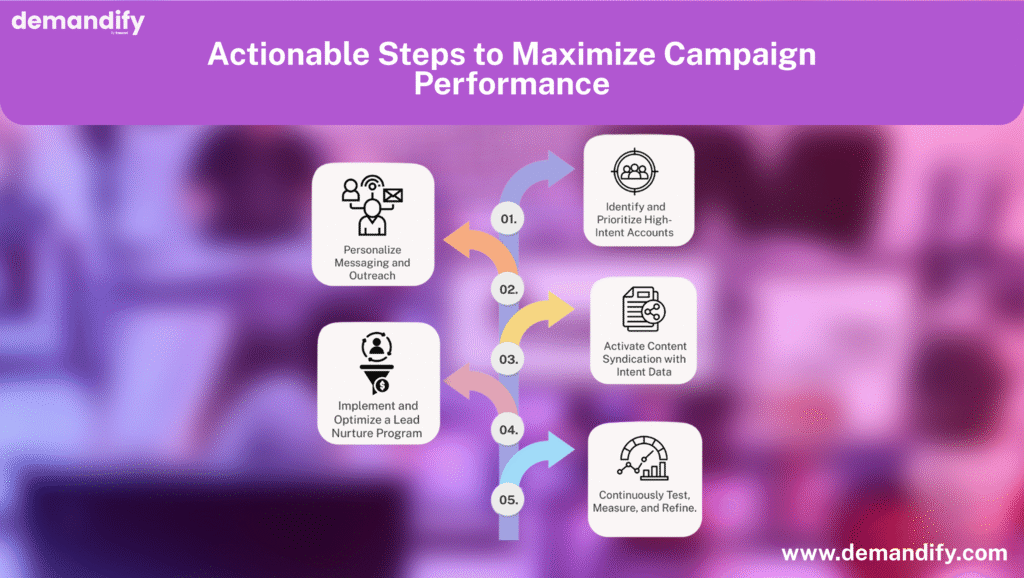How to Maximize Campaign Performance Using B2B Intent Data Trends

Campaign performance in B2B marketing has advanced alongside the adoption of intent-based strategies. Effectively harnessing b2b intent data has become a prerequisite for businesses eager to discern in-market prospects, calibrate outreach, and lift conversion rates. The following sections outline strategies to strengthen campaign outcomes by leveraging current intent data principles, optimizing content syndication, and designing a robust lead nurture program.
Understanding B2B Intent Data
B2B intent data comprises behavioral signals that reveal when organizations are conducting research on solutions and when they are likely to enter the purchasing cycle. The data originates from web activity, content downloads, engagement with product pages, and interactions across diverse digital channels. By interpreting these signals, firms can identify high-potential accounts ahead of their competitors and customize outreach efforts, leading to more effective engagement and improved results.
Recent analysis indicates that firms that leverage B2B intent data experience meaningful gains in campaign engagement, increases in qualified lead volume, and improved return on investment.
Actionable Steps to Maximize Campaign Performance
- Identify and Prioritize High-Intent Accounts
Leverage intent data services to identify firms actively aligning with your market positioning. By cross-referencing this intelligence with your ideal customer attributes, you can direct marketing and sales efforts toward leads most likely to convert, thereby concentrating budget and resources on opportunities with greater pay-off.
- Personalize Messaging and Outreach
Evidence from intent data suggest that precision-targeted communication drives superior results. When your teams discern the specific topics and solutions prospects are investigating, you can calibrate messaging to address those queries head-on, yielding greater interaction and conversion. This level of customization should permeate all channels consider personalized email, programmatic advertising, and social outreach that echo the prospect’s identified interests.
- Activate Content Syndication with Intent Data
Content syndication allows organizations to place their intellectual assets articles, case studies, videos, and interactive tools on influencer, media, and industry partner sites where prospective customers already seek expertise. When syndication choices are steered by intent signals, marketing teams can direct their assets to specific digital destinations frequented by surging, in-market prospects. The consequence is not merely a larger audience but a net gain in opportunities already predisposed to engage. Matching delivery formats fact sheets, solitary webinars, in-depth research reports against prospect topic affinities will further enhance performance.

- Implement and Optimize a Lead Nurture Program
Prospective customers rarely move from interest to purchase in a single interaction. A well-orchestrated lead nurture program, powered by intent-based segmentation, delivers the right content to the right persona precisely when they signal readiness to learn more. Studies in the field indicate that such sustained engagement can boost the number of leads that qualify for sales by as much as half, while concurrently lowering average acquisition expenditures. Conduct routine audits of evolving intent behavior, then recalibrate nurture cadences and asset libraries to eliminate redundancy and keep the dialogue relevant and timely.
- Continuously Test, Measure, and Refine
Top-tier B2B teams regard campaign design as a living laboratory. They harness intent signals and engagement KPIs not only to guide initial choices but also to run concurrent A/B tests that fine-tune creative direction, narrative arcs, and channel investments. By detecting real-time variances in buyer engagement and intent trajectory, firms can pivot before performance erosion begins. The capacity to reconfigure swiftly translates initial learnings into durable marketplace advantage.
Harnessing the Future of Intent Data
The next wave of intent-data capabilities will combine ultra-granular, cross-channel signals with AI-driven predictive modeling. As these techniques mature, marketers will discern nuanced account-level needs and emerging behaviors, allowing them to tailor interventions with unparalleled accuracy and effectiveness.
Conclusion
To optimize campaign performance now and in the future, B2B intent data must occupy the strategic core of every initiative informing account selection, guiding content distribution, and powering referral lead-nurture tracks. By continuously monitoring buyer intent trajectories and acting on live data, teams will deliver focused, resonant engagements that propel prospects confidently and steadily through the buying journey.
Read Other Information:
The Role of Content in a High-Performing Lead Nurture Program
How to Structure a B2B Lead Generation Funnel That Delivers Results
Why ABM Marketing Delivers Higher ROI Than Traditional Demand Gen
Why Content Syndication Services Are Essential for B2B Growth


